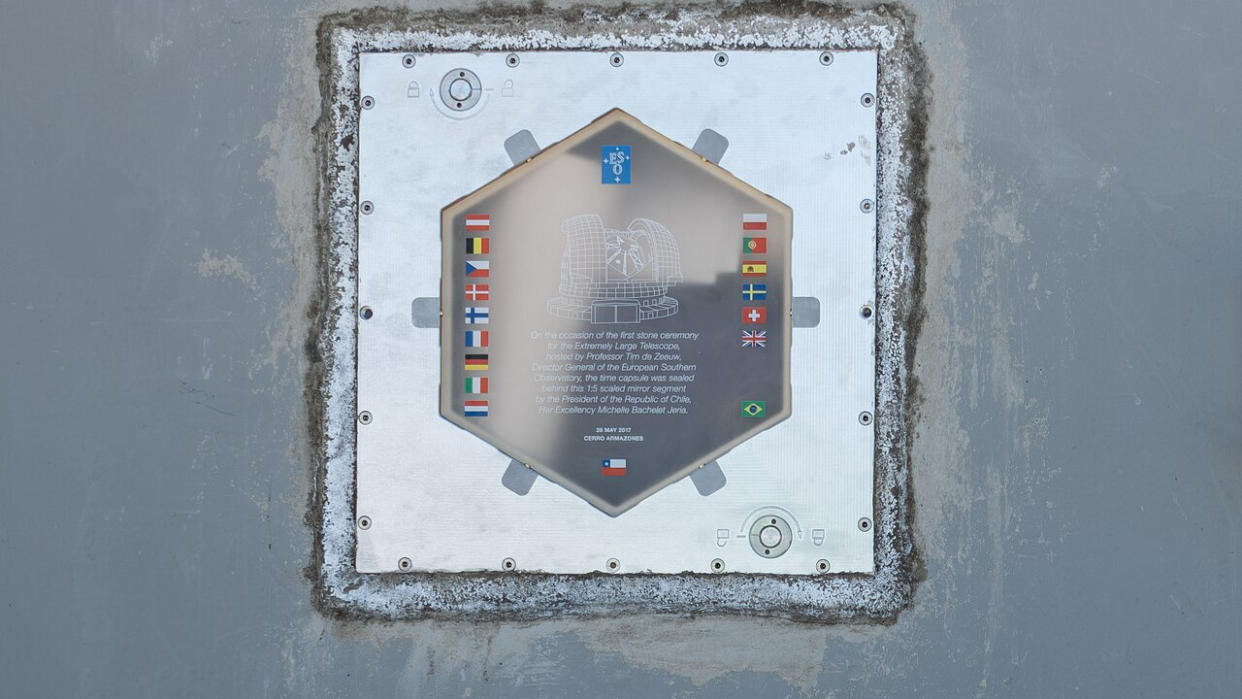Scientists bury time capsule to celebrate upcoming Extremely Large Telescope (photos)

- Oops!Something went wrong.Please try again later.
A commemorative time capsule was buried at the construction site of what will soon be the world's largest visible and infrared light telescope.
On Oct. 13, the European Southern Observatory (ESO) celebrated its upcoming Extremely Large Telescope (ETL) by burying a time capsule that was sealed in 2017, when construction first began. The capsule is filled with tokens celebrating ESO staff and the cooperation between the observatory and Chile. It also celebrates the amazing science and technology behind the 39.3-meter telescope.
"Serving as a symbolic message to future generations, it contains mementos from Chilean authorities, including a plaque from the then President of Chile, Michelle Bachelet Jeria, about opening the skies of the country to the questions of an entire planet, as well as drawings from Chilean children featuring the Universe, ESO telescopes and northern Chile landscapes," ESO officials said in a statement.
Related: Amazing space views by ESO's Very Large Telescope (photos)

Photographs of ESO staff and a copy of a book describing the future scientific goals of the ELT, which is expected to see its "first light" by 2028, were also preserved. The time capsule was buried in the wall of the ELT dome on Cerro Armazones in the Chilean Atacama Desert, where the ESO currently operates its Very Large Telescope (VLT).
The time capsule was covered in an engraved hexagon that is a one-fifth-scale model of one of the ELT’s primary mirror segments. The Oct. 13 event was led by ESO Council President Linda Tacconi (Germany) and Vice-President Mirjam Lieshout-Vijverberg (The Netherlands). A few days later, on Oct. 15, ESO Council members mounted a commemorative plaque next to where the time capsule was buried.

In July, the ELT reached the halfway point in its construction, with an expected completion date of 2028. While the telescope appears as only a steel structure right now, it will eventually house five separate mirrors, the largest of which will be made up of 798 individual hexagonal segments.

RELATED STORIES:
— See the world's largest telescope come together beneath the Milky Way (video)
— The 10 biggest telescopes on Earth
— Very Large Telescope photographs its lightest ever exoplanet
At 39.3 meters (120 feet) wide, the ELT will be able to take in more light than current ground-based telescopes and thus provide sharper images of the cosmos, which could aid in the search for life outside Earth and reveal new insight on the nature of dark matter and dark energy.
"As the largest optical and infrared telescope in the world, the ELT will shift our understanding of the universe," ESO officials said in the statement. "Its scientific goals range from the solar system to the edge of the observable universe, including exoplanets, black holes and the first stars and galaxies."

